Amon, the resurrected pre-Deicide 1990s band featuring the Hoffman brothers who served as guitar in Deicide, releases its debut CD “Liar In Wait” on June 3, 2012 at the band’s official website.
No CommentsGraveland – “Be Like Valkyria”
Graveland “Be Like Valkyria” tshirts have been released. Additional news items:
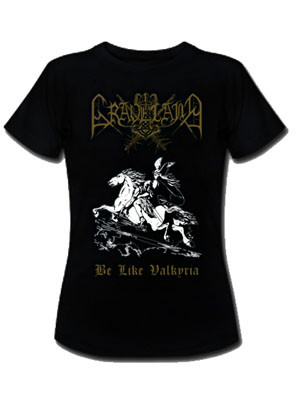
- Graveland “Thunderbolts of the Gods” will include 5 new songs, all bass guitar parts are recorded, I just now must write lyrics and will record vocals, and the album will be ready. The album will probably be released in September 2012!
- Next two new Graveland songs are for a split CD with Polish Pagan Metal band Bialy Vitez. Split CD will be released by Eastside Rec.
- New polish version of the album “Memory and Destiny” will be released under title “Pamięć i Przeznaczenie”, limited digi pack, totally new mix, re-recorded drum, fiddle re-recorded by Alruna, polish vocals. Digi pack will include bonus stuff
- Hammer of Damnation released new official t-shirt of Graveland “Thousand Swords” ! and will release soon tapes of this great album!
- On my official facebook profile (Robert Fudali) you can find some news and my new photos, like from Ogrodzieniec 2012 (Viking – Slavonic festival), and new Graveland photos!
- New T-shirt “Be Like Valkyria” 2012. BLACK & NAVY t-shirt (B&C – 190 gramm / WOMAN only) with white / gold prints. Limited to 66 copies. Label: Hammerbolt.
- Silver Thor’s Hammer. Thor’s Hammer – with dragons stylisation sizes 3 cm x 2 cm made of silver. Available at Walhalla.com.pl
- Graveland “Logo” Caps 2012! Released by Warheart Rec! Available from Hellshop
- Graveland – Prawo Stali – Tape 2012. Available from Hammerbund Prod.
- Graveland 2012: Photo session Spring 2012. 1 2 3
- Graveland “Following the Voice of Blood.” With the sound of horses the time of revenge drawls nigh. 1000 swords to be drawn to the disposal of the architects of faith and deceit. Pagan villages demolished, disposed of out of fear and lack of control. The bloody revolt will be a strength of wills, where the weak will cower down and heed to the new way. The strong will continue to fight the bloody struggle of their Ancestors. The ancient traditions will carry on through us, as we follow the voice of blood. CD re-issue 2012 by Forever Plagued Rec.
- Graveland CDs released by Forever Plagued Records: No Comments
Derketa – “In Death We Meet”
Derketa – In Death We Meet full length CD available this Thursday, May 24th.
- $13 for US, $17 outside of US, Paypal to merch@derketa.com.
- Email merch@derketa.com for shipping quote of multiple quantities.
- Snail Mail, money order made out to:
Sharon Robinson
P.O. Box 44271
Pittsburgh, PA 15205
USA
In Death We Meet will be sold at MDF at the Sevared Records merch booth, $10.
No CommentsSammath – “Warm Blood Cold Steel”
PhD thesis explores heavy metal as an elective community
While conventional thought sees communities as static entities, a newer method allows us to see them as they form through common rituals and symbolism, such as that transmitted through music. As a result, it’s possible to view international heavy metal as a community by choice in which people share values, behaviors and common linguistic tokens. Read the full paper here.
No CommentsManowar to release “The Lord of Steel” on June 16
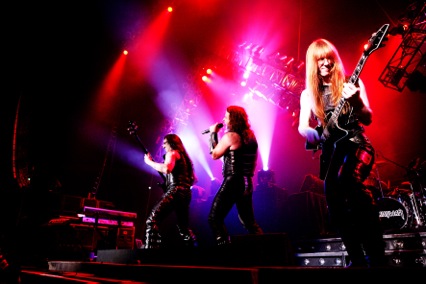 MANOWAR’s new studio album, The Lord Of Steel, will first be released worldwide on June 16, 2012 exclusively on iTunes and on the band’s own online store, The Kingdom Of Steel.
MANOWAR’s new studio album, The Lord Of Steel, will first be released worldwide on June 16, 2012 exclusively on iTunes and on the band’s own online store, The Kingdom Of Steel.
On the same date, Metal Hammer UK will release a special ‘Steel Edition’ of Metal Hammer #233, including the CD and a digital copy of the album.
The Lord Of Steel is blazing with pure power, untamed energy, and a sound as raw and wild as a force of nature. Track titles like Annihilation and Hail, Kill And Die! set the tone for a record that is packed with surprises.
In contrast to the 2007 release Gods Of War, this new album is not a concept album, yet each song tells a different story, retaining the MANOWAR vision of righteousness, honor and everything MANOWAR fans have come to know and love.
MANOWAR fans should expect to have “their heads completely blown off” said MANOWAR bassist Joey DeMaio in a recent interview, and explained that “…this album is all about brutality and raw power!”
Known for their adventurous spirit and for never releasing the same style of album twice in a row, MANOWAR have this time tapped into the world of action heroes and their stories, writing their first song specifically for a Hollywood movie, EL GRINGO and another one, Expendable, inspired by Sylvester Stallone’s action movie franchise ‘The Expendables’.
The band recently announced that El Gringo will be the theme song of the action western EL GRINGO, featuring Scott Adkins (‘Expendables 2’, ‘The Bourne Ultimatum’) and Christian Slater and produced by After Dark Films (‘An American Haunting’) and Joel Silver’s (‘Matrix’, ‘Lethal Weapon’) Dark Castle Home Entertainment.
“We were talking about a concept album but then got inspired to go in a different direction. This is where we are right now,” explained Joey DeMaio. “I’ve been doing research on getting the best microphones and pre-amps for the guitars. The bass sound is death defying. We’ve done a lot of work on drums too, giving Donnie room to stretch out. And Eric will simply sound bigger than life as always.”
The album will be mixed and mastered at the legendary Wisseloord Studios by long-time collaborators mixing engineer Ronald Prent and two-time Grammy award-winning mastering engineer Darcy Proper.
Upcoming MANOWAR headlining tour dates:
Sat, June 16, 2012 – Ost Fest – Bucharest, Romania
Thu, June 21, 2012 – Gods Of Metal – Milan, Italy
Fri, July 6, 2012 – Getaway Rock Festival – Gävle, Sweden
Mon, July 9, 2012 – Dortmunder Music Week Festival – Dortmund, Germany
More info:
www.manowar.com
www.facebook.com/manowar
www.magiccirclemusic.com
Jeff Hanneman recovering from flesh-eating spider bite
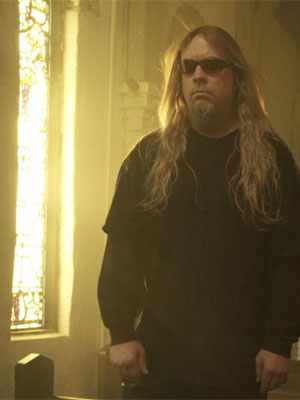 Update on Jeff Hanneman of Slayer, who has been out of condition with a necrotic spider bite:
Update on Jeff Hanneman of Slayer, who has been out of condition with a necrotic spider bite:
Jeff was bitten by a spider more than a year ago, but what you may not have known was that for a couple of days after he went to the ER, things were touch-and-go. There was talk that he might have to have his arm amputated, and we didn’t know if he was going to pull through at all. He was in a medically-induced coma for a few days and had several operations to remove the dead and dying tissue from his arm.
So, understand, he was in really, really bad shape.
It’s been about a year since he got out of the hospital, and since then, he had to learn to walk again, he’s had several painful skin grafts, he’s been in rehab doing exercises to regain the strength in his arm; but best of all, he’s been playing guitar. We were all excited when he joined us onstage for the encore a year ago at The Big Four show at Coachella. Since then, we’ve given him all the time and support he’s needed to continue his rehab so he can come back to the band fully recovered and able to deliver the kind of shows we all want him to.
While Jeff’s been doing some writing and has been coming to rehearsal over the past several weeks, he has decided he needs to take more time to continue his rehab. While we want him back onstage with the band, all of us support his decision. So, we’re very grateful that Gary Holt will continue to fill in for Jeff, and will tour with us until Jeff completes his rehab and is ready to return. How long will that be? The best and most honest answer we can give you is ‘as long as it takes.’
We also wanted you to know that we’ve been doing some writing and recording for the next Slayer album – we’ve tracked a few songs, and will finish the album when we’re off the road later this year. Gary will join us on tour in Europe and the UK in May and June, and then we’ll all see you on this Summer’s Mayhem Festival. – Slayer
Keep him in your thoughts and blasphemic imprecations of desolate transcendence.
No CommentsWhat we have cranked (May 1, 2012)
- Jess and the Ancient Ones – Sulfur Giants
- Imprecation – As Blasphemy Reigns/Vomit Flood of Christian Remnants
- Demoncy – The Arcane Aristocracy
- Divine Eve – The Ravages of Heathen Men
- Beherit – Demon Advance
- Neptune Towers – The Arrival At Empire Algol
- Cianide – Human Cesspool
- Ceremonium – Serenity
- Prong – Carved into Stone
- Goatcraft – Culling in D minor
- Sarcofago – Crush, Kill, Destroy
Northern Traditions II: call for articles
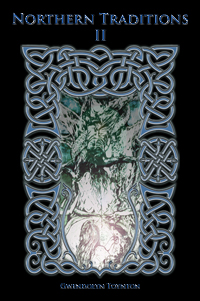 Northern Traditions is a yearly publication, of which this is the second volume. Contributions of articles, artwork, translations and poetry are now open.
Northern Traditions is a yearly publication, of which this is the second volume. Contributions of articles, artwork, translations and poetry are now open.
Topics include, but are not limited to: indigenous Traditions of Northern Euope, Celtic, Norse, Teutonic, history, geography, mythology, culture, literature, linguistics – the range of topics and possibilities are immense.
Numen Books needs people to submit articles for this legendary series.
No CommentsCianide – The Dying Truth re-issue
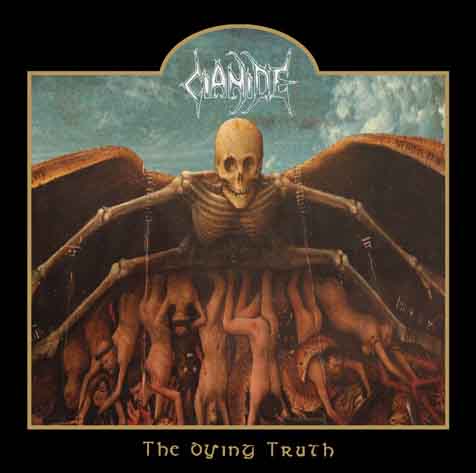 Recorded back in the hazy 1990s, The Dying Truth is a morbid sort of grindcore-influenced death metal that takes a death-doom pace with an eclectic but primitive approach to riffs.
Recorded back in the hazy 1990s, The Dying Truth is a morbid sort of grindcore-influenced death metal that takes a death-doom pace with an eclectic but primitive approach to riffs.
The re-issue of this death/doom classic from 1992 with its original intended track order and “Funeral” (Demo 1990) and “Second Life” (Demo 1991) tracks as bonus.
Release date: May 18th.
CD $7.50
T-shirt $12.75
Combo $18.75

